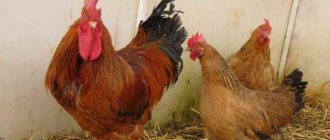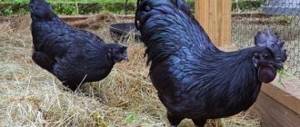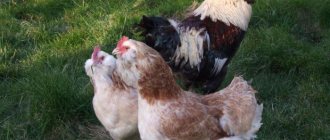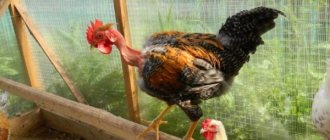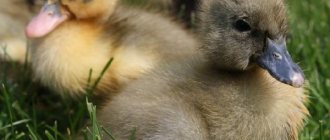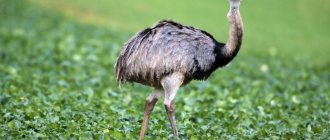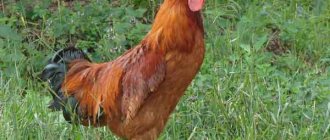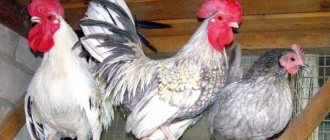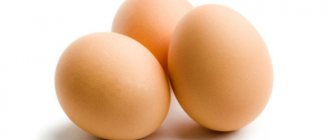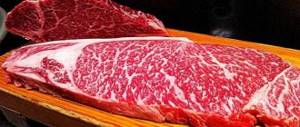Chickens can be meat, egg, decorative and mixed (universal) varieties. When growing at a poultry farm, producers focus on only one indicator: a large carcass, high quality meat or a large number of eggs.
Meat-and-egg chickens can provide the poultry farmer with carcasses and the optimal number of eggs.
For home breeding, meat and egg breeds of chickens that are distinguished by their unpretentiousness, good growth rate and abundant laying are more suitable.
Breed characteristics of meat and egg chickens
Universal breeds are the result of long-term crossing of meat and egg chickens. In most cases, their mixed productivity is not a natural feature, but the result of the work of breeders.
By what characteristics are they distinguished?
Despite their different origins, meat and egg breeds of chickens have a number of common characteristics:
- the body is dense, the plumage is thick and loose;
- wings are poorly developed;
- the character is peaceful and calm, although males can get into fights;
- due to long-term selection, many breeds are resistant to infectious diseases;
- hatchability and survival rates of young animals reach 98%;
- maternal instinct depends on the genetic line, but most breeds tend to be brooding.
Meat-and-egg chickens have a dense build.
The characteristics of each type of meat and egg chicken can be found in the description of the breeds.
Productivity table
Productivity of universal chickens:
| Meat (poultry weight) | Egg | ||||
| Chicken | Rooster | Average slaughter time | Masonry, pcs. in year | Average egg weight | Period of decline in egg production |
| 2.0-3.5 kg | 2.7-4.0 kg | 8-9 months | 180-220 | 55-65 g | 1.5-3 years |
The productivity of chickens also depends on the consumer qualities of the meat. Generalist carcasses have a good fillet yield and medium fat content. Rooster meat may have small layers of fat that make it more tender and juicy.
Mixed bird broths and stews are tender and flavorful.
Distinctive features
Initially, attention was paid to the development of meat and egg breeds separately. At the beginning of the 19th century, American breeders made the first attempt to cross varieties of the two directions to produce both meat and eggs. The result is rapid weight gain and high egg production. The first meat and egg combination chickens:
- Dominican;
- Plymouth Rock;
- Wyandotte;
- Rhode Island;
- Chanticleer;
- New Hampshire.
The reproductive system of chickens of these breeds is fully formed by 6 months. Each individual produces approximately 220 eggs per year, and egg eggs produce 260-280 eggs. The latter are not suitable for meat due to the low quality of the product. By the age of one year, meat and egg laying hens gain weight of 3 kg, cockerels - 4 kg. Meat ones weigh 4 kg. By the age of two months, chicks of combined species gain weight 30% more than chicks of egg breeds.
They are characterized by a peaceful nature. Most of them have a developed brooding instinct. They have a strong immune system, so they rarely get sick. They do not require special conditions and quickly adapt to climate changes.
How to properly contain:
- the chicken coop is clean and spacious;
- daylight hours 13 hours;
- free range is required;
- nutrition should be balanced;
- timely vaccination.
Chickens of meat and egg breeds are prone to rapid weight gain. Overfed birds have reduced productivity.
Advantages and disadvantages of station wagons
The main advantage of all-purpose chickens is the ability to simultaneously obtain a large amount of meat and eggs for nutrition and breeding.
In addition, mixed breeds have the following advantages:
- increased resistance to cold and disease;
- rapid adaptation to new conditions when changing food, transportation, quarantine, etc.;
- high hatchability of chickens and flock survival;
- calm disposition, absence of noise, friendliness towards the owner, animals and birds;
- high consumer qualities of meat and eggs;
- preserved maternal instinct (in some breeds).
Generalist chickens quickly adapt to new conditions.
All-purpose chickens are good foragers, so in spring and summer the cost of feed and mash decreases. Since the wings of most meat and egg breeds are not developed, it is enough to fence the yard with a mesh fence up to 1.5 m high.
The disadvantages include the following aspects:
- the growth rate is significantly lower than that of broiler hybrids and meat crosses;
- the period of puberty is quite long, and the average annual clutch is small;
- Many breeds (for example, Amroks, Orpingtons, etc.) hatch more males than females, which does not correspond well to the main principle of breeding.
Chick selection
It is recommended to buy chickens for replacement of livestock at large poultry farms or from trusted large breeders. Inexperienced owners often make mistakes in breeding and crossing chickens.
When choosing chickens, you need to pay attention to the following signs:
- Behavior is active. The chicks do not sit still, squeak softly, do not huddle in a corner or huddle together.
- The abdomen is not distended, elastic to the touch. There are no traces of feces, pus or blood near the cloaca.
- The eyes are alive and clear. There are no stuck areas around.
Chicks must have an active behavior.
To check the chicken's health, you can close it in a small cardboard box and lightly tap the lid. A healthy chick will quickly approach the source of the sound.
Before purchasing, it is recommended to find out the average price of chickens. A discount of more than 10% may indicate culling or other deficiencies in the brood. The future owner should evaluate not only the appearance and condition of the chicks, but also the exterior of the parent individuals.
If you have a warm, equipped chicken coop and experience in rearing, you should choose day-old or week-old chickens. You need to buy them in April in order to get a sufficiently mature herd in October-November.
If there is no insulated room, you can purchase 30-day-old chicks. Before purchasing, you need to find out whether the chickens are vaccinated and with what vaccines.
The best varieties of meat and egg chickens with descriptions
When choosing chickens, you need to evaluate not only their productivity, but also the complexity of keeping them. The farmer’s income will depend on the ratio of primary investments (in lighting, heating the poultry house, arrangement of the yard), current expenses (for food, treatment), quantity and quality of the product received.
Some poultry keepers prefer chickens with good decorative qualities to decorate their yard. To evaluate the exterior, photographs of classic representatives of the breeds are suitable.
Farm breed Australorp
The breed was developed in Australia at the end of the 19th century. To ensure high productivity, breeders crossed the classic representatives of the egg, meat and meat-egg varieties: Leghorns, Langshans and Orpingtons.
The Australorp is a breed of chicken native to Australia.
The most popular color of Australorps is black. There are also blue, white, wheaten, gold, red, silver and marbled (black and white) chickens. The weight of an adult laying hen reaches 3.5 kg, and that of a male – 4.5 kg. Over the course of a year, a chicken produces 200-240 eggs weighing about 60 g. Laying begins at 4 months, and a decline in productivity occurs only at 2 years.
Australorps are flexible, phlegmatic and peaceful. They rarely vocalize, get along well with other birds and quickly adapt to the yard.
The website has a detailed article on how to breed Australorps.
Marana chickens
Maranas were bred in France in 1895. Due to their powerful body, resistance to adverse conditions and high quality eggs, they quickly became popular throughout the world.
The weight of a chicken reaches 3.3 kg, and that of a rooster – 4 kg. The carcasses have an attractive appearance due to their light skin, and the meat has good taste.
Marana chickens are distinguished by their large egg size.
Egg production in laying hens is average: only 130-160 eggs. in year. Sexual maturity of chickens occurs at 5.5-6 months. The intensity of the masonry depends on the air temperature and the length of daylight hours. The eggshell is dark and thick. This barrier protects the protein from infection from the surface.
Marana chickens have a developed maternal instinct.
The breed has a large number of acceptable colors.
The plumage of chickens and roosters can be golden, lavender, black, speckled (cuckoo), copper-black, white, Colombian, etc.
Poltava clayey
Poltava clay chickens were bred in Ukraine in the mid-20th century. The basis was taken from local breeds, as well as the most common and productive foreign ones - Orpingtons, New Hampshires, etc.
The Poltava clay breed of chickens was bred in Ukraine.
Poltava birds are resistant to cold, unpretentious and calm. They have dense plumage, most often brown, but there are black and speckled varieties. Sexual maturity occurs at 5 months, simultaneously with the start of laying. The weight of an egg is 55-60 g; a laying hen produces an average of 190 eggs per year. Laying hens have a well-developed brooding instinct.
The weight of the carcass is small - only 2.0-3.5 kg, but the meat is juicy and tender.
Leningrad chintz, beloved by gourmets
The Leningrad calico breed was obtained in several stages. The selection included Leghorn, Australorp, New Hampshire, Leningrad White and Poltava Clay chickens. From the photo you can appreciate the variegated decorative colors of calico birds.
The Leningrad calico breed of chickens belongs to the meat and egg breed.
The weight of a laying hen is up to 2.2 kg, and that of a rooster is up to 2.7 kg. Despite their light weight, calico chickens are valued for their productivity, since the meat is white, juicy and nutritious. Females gain weight faster than males.
The average annual clutch of laying hens is 160-180 eggs, the weight of which is 58-60 g.
Representatives of this breed are quite friendly and peaceful, but are distinguished by their curiosity, activity and love of walks.
Compact mini
Breeding miniature chickens is widespread mainly in Europe. Dwarf birds have beautiful reddish or white plumage, making them a great addition to the yard. Despite the presence of fluff, they are sensitive to cold and require keeping in an insulated chicken coop.
Compact mini chickens were bred as a result of selective breeding.
The weight of an adult laying hen does not exceed 1.8-2.0 kg, and that of a rooster – 2.3-2.5 kg. In appearance, dwarf chickens are similar to Rhode Island chickens. The egg productivity of compact individuals is 180-190 eggs. in year. The average egg weight is 55 g.
The advantages of mini breeds are the possibility of dense planting in the poultry house, strong immunity and lower feed costs.
Dwarf chickens consume 30-35% less food than standard-sized chickens.
Rhode Island breed
This breed was named after the state of the same name, which is still one of the leaders in American poultry farming.
Rhode Islanders are growing fast. Females gain up to 2.9 kg, and males gain up to 3.9 kg. Chickens mature at 7 months. The hen brings up to 170 large eggs per year.
Rhode Island is a meat and egg breed of chicken.
Both chickens and roosters have a calm character, but need walking. A large yard with plenty of greenery significantly reduces feed costs.
They are undemanding when it comes to diet and tolerate food changes well. When breeding, you need to carefully monitor the temperature in the house. Extreme conditions sharply reduce the survival rate of young and adult livestock.
Large Liven Calico chickens
Liven calico chickens are similar to Leningrad chickens in color, but, unlike them, they are the result of folk selection. Due to long-term natural crossing, the breed is distinguished by a variety of colors.
Liven calico chickens are similar to Leningrad chickens in color.
Liven chickens have a dense body weighing up to 3.4 kg in females and up to 4.4 kg in males. The meat of these birds is tender and lean. Chickens begin to lay eggs late, at 8 months, but remain productive up to 4.5-5 years. The average annual clutch is 210-220 eggs, their average weight is 60 g.
Naked breed of birds
Bare-necked chickens have characteristic external features and high endurance. The breed is widespread in the CIS countries and Europe.
The weight of chickens reaches 2.5 kg, roosters - 3.5 kg. Naked neck carcasses are easy to pluck, and the meat tastes similar to turkey.
The naked-necked bird is an easy breed to care for.
Laying hens begin laying eggs at 6 months. The average annual productivity is 170-180 pcs. Chicks are practically devoid of the brooding instinct, but hatching chicks have good survival rates.
Farmer's Ukrainian earflaps
This breed is widespread in Russia and Ukraine. Despite their small size and average egg production (160-190 eggs per year), these chickens are highly valued by farmers for their good survival rate, unpretentiousness and developed maternal instinct.
Ukrainian earflaps have become widespread in Russia.
Ushankas adapt well to any conditions, are insensitive to cold and resistant to viral diseases. The weight of an adult chicken is 1.8-2.3 kg, a rooster - 2.3-2.8 kg. The maximum egg productivity of laying hens is observed only in the first year, and then decreases. They lay their first clutch at 6-7 months.
The oldest European breed is the Welsumer.
Welsumers were bred at the beginning of the 20th century. in the Netherlands. As they spread in Europe, they were crossed with local meat and egg breeds, obtaining an increasingly more productive cross.
Welsumers have a dense build, a rounded silhouette and motley plumage. Classic breed colors are red-partridge, silver and golden.
Welsumer is a meat and egg breed of chicken.
The weight of an adult rooster reaches 3.5 kg, a chicken – 2.5 kg. Laying hens become productive from 5.5 months, producing up to 160 eggs per year. From one and a half years, the masonry decreases by 15-20%.
Chickens have no brooding instinct. Welsumers are friendly towards humans, but roosters can be aggressive towards other inhabitants of the poultry house.
Yerevan chickens
The Yerevan breed was obtained by crossing local Caucasian chickens with New Hampshire and Rhode Island chickens. The official standard was only approved in 1974.
These chickens have a powerful body with a wide chest and dense plumage of a red-brown color. The weight of the rooster reaches 3.5-4.5 kg. Laying hens are significantly smaller and grow to only 2-3 kg.
Yerevan chickens - the works of Armenian breeders.
The first clutch occurs at 6-7 months. Over the course of a year, chickens produce up to 200 eggs weighing about 60 g. Productivity is maintained for 2-3 years.
Yerevan birds are calm, not prone to fights, and adapt well to new environments. Laying hens are able to hatch their offspring independently.
California chickens
Thanks to the mixture of Leghorn and Plymouth Rock genes, the California Gray breed is one of the leaders in egg production. The average annual laying volume of laying hens is 220-240 pieces. Egg production lasts for 2-3 years.
California chickens are medium-sized birds.
They have a beautiful striped color, so some farmers breed them as ornamental eggs.
The weight of a chicken is 2.3-2.5 kg, and that of a rooster is up to 3 kg. Maturation occurs at 5.5-6 months. Only 30-40% of laying hens are prone to incubation.
Plymouthrocks
The Plymouthrock breed was bred by American breeders in the second half of the 19th century. The ancestors of meat-and-egg chickens were Spanish black roosters, Langshans, Brahmas, Coninhins and Dominican chickens.
Plymouthrocks are a breed of chickens producing meat and eggs.
The advantages of the breed are its beautiful color, friendly disposition and undemanding conditions.
The average weight of a chicken is 3 kg, a rooster is 4 kg. Birds gain maximum weight by six months. Females begin to lay eggs at 6 months. You can get up to 200 eggs per year.
Sussex breed
Sussex is one of the oldest meat and egg breeds. Its first representatives were bred in the Roman Empire, but it was finally formed in the English county of the same name. To increase productivity, Sussexes were crossed with Brahms, Dorkings and Coninchins.
The Sussex breed is popular among Russian breeders.
The most common is the Colombian color of birds, which is why they are also considered decorative. By nature, Sussexes are calm and affectionate.
Adult males weigh up to 4 kg, and females weigh up to 3 kg. Sussex meat is tender, lean, and high in protein. Laying hens mature in 5.5-7 months and produce up to 190 eggs per year. They have a well-developed brooding instinct.
Faverolles
Faverolles is a French breed that was developed by crossing Coninchins, Dorkings, Brahms and Houdans. They are distinguished by a calm character, good immunity and beautiful plumage with thick down. Classic colors are salmon (Lachshuner), blue and silver (California).
Faverol is a godsend for Russian poultry farmers.
Due to the fact that meat and broth breeds were used in the selection, fireballs have quite a lot of weight. The weight of a chicken is 3-3.5 kg, and that of a rooster is 4-4.5 kg. Carcasses are easily plucked and retain their presentation for a long time after slaughter.
In the first year after maturation, hens lay up to 180 eggs per year, in subsequent years - no more than 130. The incubation instinct is poorly developed. The hatchability of fireballs in the incubator is about 75%.
To prevent injury and illness, you need to properly set up and clean your chicken coop regularly. Perches for firewood should be low.
Amrox chickens
Amroks are highly productive birds that are characterized by good survival and rapid growth. To breed the breed, breeders used Coninhin, black Javanese and Dominican chickens. The color of Amroks is cuckoo, with contrasting thin stripes.
Amroks are an American breed of chickens.
The weight of an adult female is up to 3 kg, the male – up to 4 kg. The first clutch can be obtained no earlier than 6 months. In the first year of activity, chickens lay up to 220 eggs, after which productivity decreases by 10-15%.
English Orpington
Orpington is one of the heaviest representatives of the meat and egg trend. Representatives of the breed have a powerful, square body with a massive shoulder girdle and a large chest.
The weight of chickens reaches 4 kg, and roosters - 5 kg. Puberty occurs at 7 months. In the first year of laying, hens produce 140-170 eggs per year, and after that the productivity decreases. Because of this, it is recommended to update the livestock once every 2 years.
Orpington is a breed of chicken of English origin.
The main disadvantage of the breed is the tendency to obesity, which negatively affects the laying and quality of meat.
Handsome Lakenfelders
The first mention of Lakenfelder chickens is found in sources of the first half of the 18th century. This breed was raised in the Netherlands, Belgium and Germany. Over time, it was replaced by more productive species, so in the middle of the 20th century. Lakenfelders were endangered.
Lakenfelders have thick and dense plumage.
The productivity of these chickens is low. Adult females weigh no more than 1.8 kg, and males - 2.5 kg. They gain maximum weight by 9 months. Chickens mature at 6-7 months, and in the first year of laying they produce up to 190 medium-sized eggs.
The advantages of the breed are beautiful plumage, strong maternal instinct, resistance to cold and good survival of offspring. The disadvantages of Lakenfelders are noise, the ability to fly high, and a high percentage of rejection due to their exterior.
Moscow chickens
This breed was bred in Russia in the second half of the 20th century. Nowadays there is only 1 subspecies of the breed - Moscow Black. The white variety is preserved only in separate collections and genetic reserves.
Moscow hens are a group of chickens producing eggs and meat.
The weight of a chicken is up to 2.5 kg, and that of a rooster is 3.5 kg. Due to the developed muscles, carcasses have a large percentage of meat. Moscow laying hens mature in 5-7 months. The average annual laying of such a chicken is 200-230 eggs.
Birds of the Moscow breed are distinguished by their docile nature, friendliness and low activity during walks. Laying hens have a well-expressed brooding instinct. They have only 2 significant drawbacks - a tendency to obesity and average immunity.
Strong breed Foxy Chick
Hungary is considered the birthplace of Foxy Chick chickens. The name of the breed is due to its bright red color. Due to their characteristic colors and large size, these birds are called red broilers or Hungarian giants.
The robust Foxy Chick breed is a popular bird that is bred by many breeders.
The weight of a foxy chick rooster reaches 5.5-6 kg, and a chicken – 4 kg. This breed is distinguished by record egg productivity: in the first year of laying, laying hens produce up to 300 eggs. In subsequent years, this figure drops sharply, so the herd needs to be renewed regularly. Chickens reach maturity early - at 4-5 months. Red hens are good hens.
Along with its high productivity, the breed has many disadvantages. Foxy Chick chickens are noisy, uncooperative and quite aggressive.
Zagorsk salmon
The Zagorsk salmon breed was obtained from New Hampshire, Rhode Island, Russian White and Yurlovsky vocal chickens. The name is due to the soft red hue of the bird's body and wings. Closer to the tail the color turns into dark brown or black, and on the belly it turns into light brown. Zagorsk roosters have a darker and more contrasting color.
Salmon Zagorsk chickens are the pride of Russian breeders.
The weight of an adult laying hen is up to 2.7 kg, and that of a male is up to 3.6 kg. Zagorsk chickens grow quickly: by 4-5 months you can get a carcass of 1.5 kg. In addition, the breed is characterized by high egg production (up to 260 eggs per year, egg weight - 60-85 g). When crossed with other chickens (Cornish, Cuchinese, Plymouth Rocks and Adlers), productive mixes with high survival rates are obtained.
The disadvantages of the breed are the ability to fly and the habit of damaging garden plantings. To avoid loss of crops and livestock, the owner will have to build a closed enclosure or a 2-2.5 m high fence around the exercise yard.
Hercules birds
Hercules is a Ukrainian breed that was bred in 2000. It received its name due to its strong build and large mass. The productivity of chickens correlates with color. Golden and speckled are the best layers, and white representatives of the breed have the heaviest weight.
Chickens gain up to 3.5 kg, and roosters gain up to 4.5 kg. Puberty occurs at 4.5-6 months. From this point on, chickens begin to produce an average of 200 eggs per year. Up to 40% of their mass is the yolk.
Hercules chickens are considered one of the best all-purpose poultry.
By nature, Hercules are quite active, lively, but at the same time peaceful. The incubation instinct in laying hens is little expressed.
Other versatile breeds
Mixed breeds also include:
- Wyandotte;
- Kuchinsky Jubilee;
- Tsarskoselskaya;
- Bresse-Gallic;
- New Hampshire;
- Bielefelder;
- Master Gray;
- Lakedanzi;
- Adlerskaya.
The Wyandotte breed is known for its versatility.
Breeding Features
When breeding meat and egg chickens, you need to provide them with a balanced diet. It should include not only grain crops, which accelerate weight gain, but also protein products, animal feed, mineral and vitamin supplements.
Generalists can be kept on the floor or in cages. The first option is more complex because it requires the construction of a spacious chicken coop, but provides higher quality meat. The second method is only suitable for birds that are not prone to obesity.
Most chicks are hatched in incubators. After birth, chicks are kept in a warm brooder until they grow warm fluff.
Depending on which breed is taken for breeding, the proportions of males and females should be from 1:6 to 1:12. To avoid loss of the flock of breeding roosters, it is recommended to duplicate.
How did you appear?
The first breeds of meat-egg chickens and chickens developed for home ranching appeared in the United States in the second half of the nineteenth century. For the first time, meat and egg breeds began to be bred in the United States in the second half of the 19th century for ranch breeding. Species of this breed also appeared in the Carpathian lands by the end of the nineteenth century (Carpathian greenshank).
In nineteen fifty to the sixties of the twentieth century, the breed of meat and egg chickens was bred in large quantities in the USSR. At that time, the poultry industry was not yet so extensive and was not the basis of the industry.
Then people who were seriously interested in chickens created about twenty breeds and even more groups of breeds. A little later, most of the meat and egg breeds were forced out of poultry farms, because they were considered unprofitable.
Photo
Check out photos of bird species.
Comparison of breed productivity
Comparison of productivity of the best meat and egg breeds:
| Breed | Chicken weight, kg | Rooster weight, kg | Masonry, pcs. in year | Egg weight, g |
| Australorp | 3,0-3,5 | 4,0-4,5 | 200-240 (in some cases – up to 300) | 55-60 |
| Maran | 2,5-3,3 | 3,5-4,0 | 130-150 (can reach 250) | 60-85 |
| Poltava clayey | 2,0-2,5 | 3,0-3,5 | 160-220 | 55-60 |
| Leningradskaya calico | 2,0-2,2 | 2,4-2,7 | 160-180 | 58-60 |
| Mini | Up to 2 | Up to 2.5 | 180-190 | 55 |
| Rhode Island | 2,5-2,9 | 3,1-3,9 | 160-170 | 58-63 |
| Livenskaya calico | 3,0-3,4 | 4,0-4,4 | 210-220 | 55-60 |
| Goloshennaya | 2,0-2,5 | 3,0-3,5 | 170-180 (in some cases – 150-160) | 55-60 |
| Ukrainian earflaps | 1,8-2,3 | 2,3-2,8 | 160-190 | 50-55 |
| Welsumer | 2,2-2,5 | 3,2-3,5 | 150-160 | 60-65 |
| Yerevan | 2,3-2,5 | 3.3-3.5 (individuals - up to 4.5 kg) | 170-175 (in some groups – 180-230) | 55-60 |
| Californian | 2,3-2,5 | 2,7-3 | 220-240 | 55-60 |
| Plymouth Rock | 2,7-3,4 | 3,6-4,3 | 180-200 | 56-60 |
| Sussex | 2,7-3,2 | 3,5-4,2 | 160-190 (in the first year of laying - up to 250-260) | 50-60 |
| Faverolles | 3,0-3,5 | 4,0-4,5 | 160-180 | 60 |
| Amrox | 2,5-3,5 | 3,5-4,5 | 180-220 | 55-60 (they become smaller when laid early) |
| Orpington | 3,5-4 | 4,5-5 | 160 | 50-60 |
| Lakenfelder | 1,5-1,8 | 2,3-2,5 | 160-190 | 50-60 |
| Moscow | 2,0-2,5 | 3,0-3,5 | 200-230 (under optimal conditions – up to 260-280) | 55-60 |
| Foxy Chick | 3,5-4 | 5-6 | 260-300 | 60-70 |
| Salmon Zagorskaya | 2,5-2,7 | 3,0-3,6 | 250-260 | 60-89 |
| Hercules | 3,2-3,5 | 4,2-4,5 | 190-220 | 64-70 |
Chickens of the Poltava clayey breed
The Poltava Clay breed found its way to Poltava in the mid-19th century. Poltava breeders crossed Orpingtons, New Hampshires and Wyandottes with each other, and in 1951 the breed was introduced to the world.
There are two types of Poltava color: Zozulyasty and Black.
The weight indicators of the hens are as follows: the weight of the hens is from 2.2 to 2.5 kg, the weight of the cockerels is from 3 to 3.5 kg. The egg production of one chicken is from 180 to 200 eggs per year, weighing 56 grams, the shell is of good thickness.

